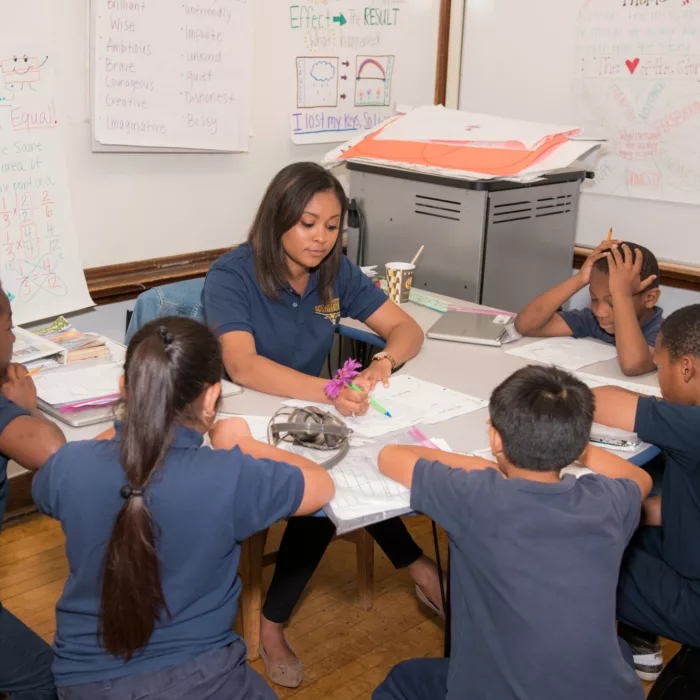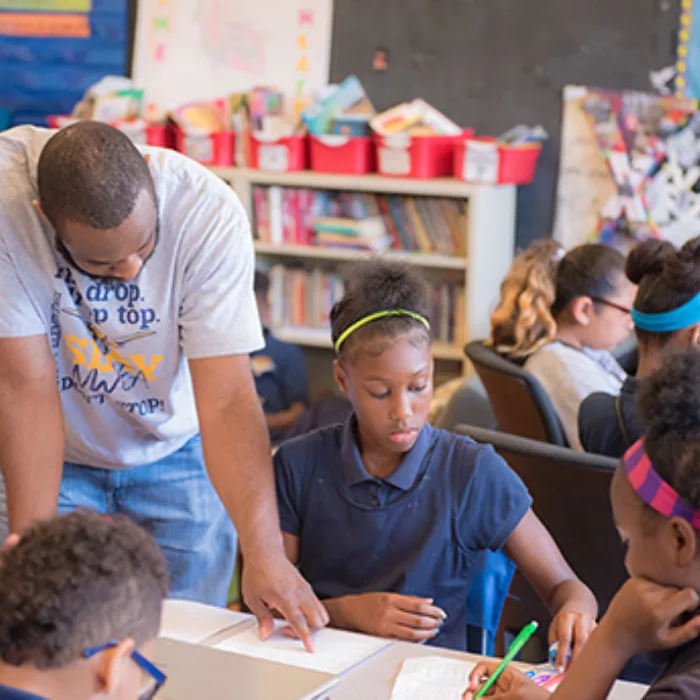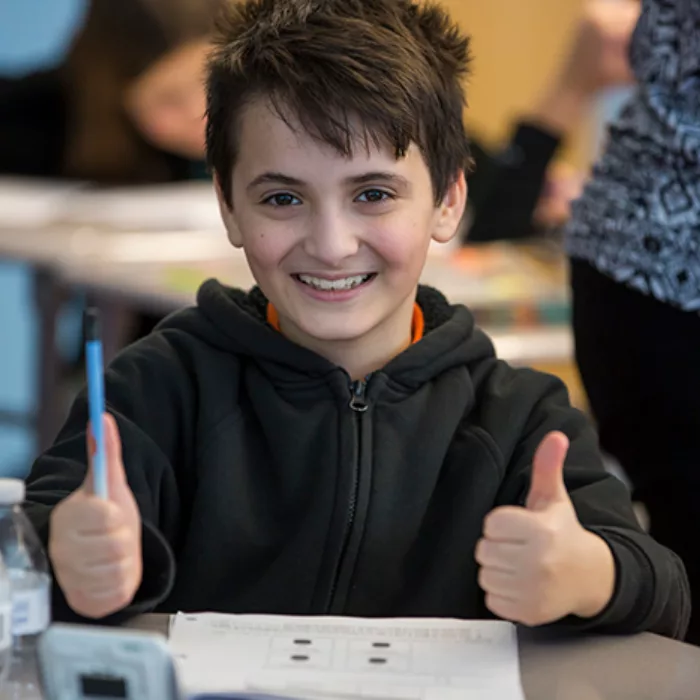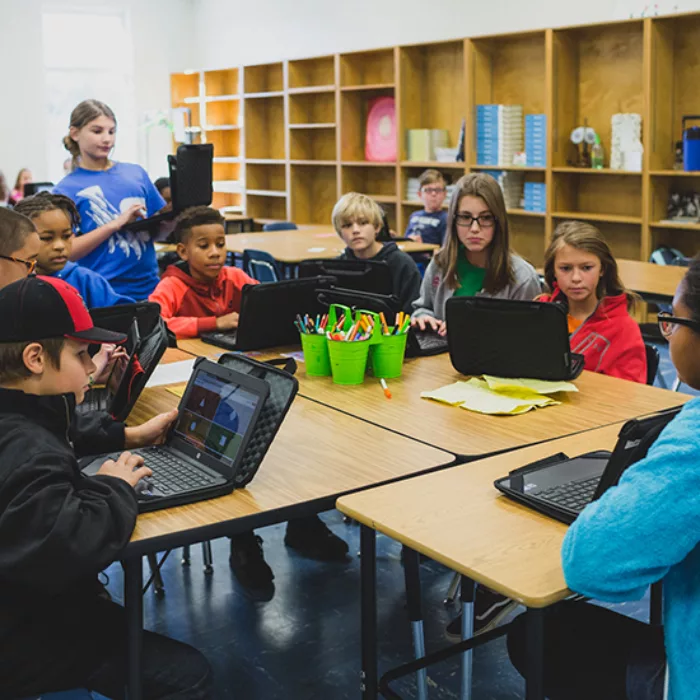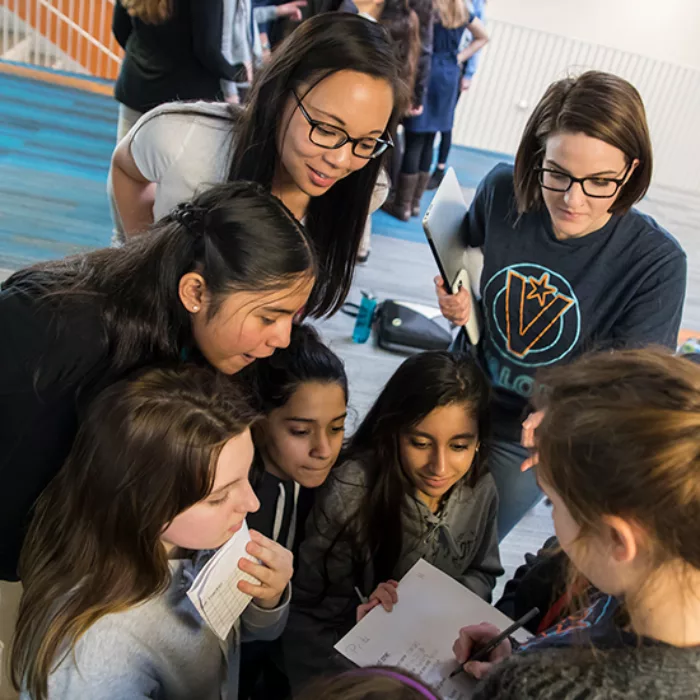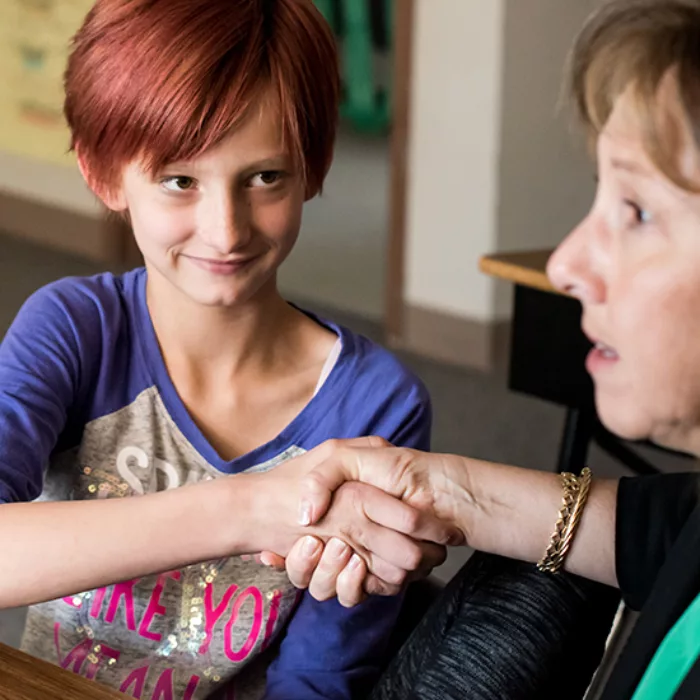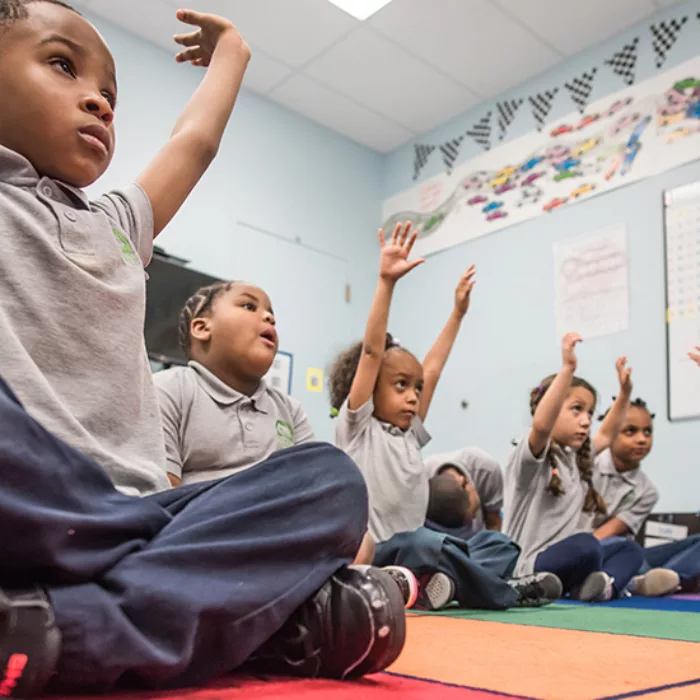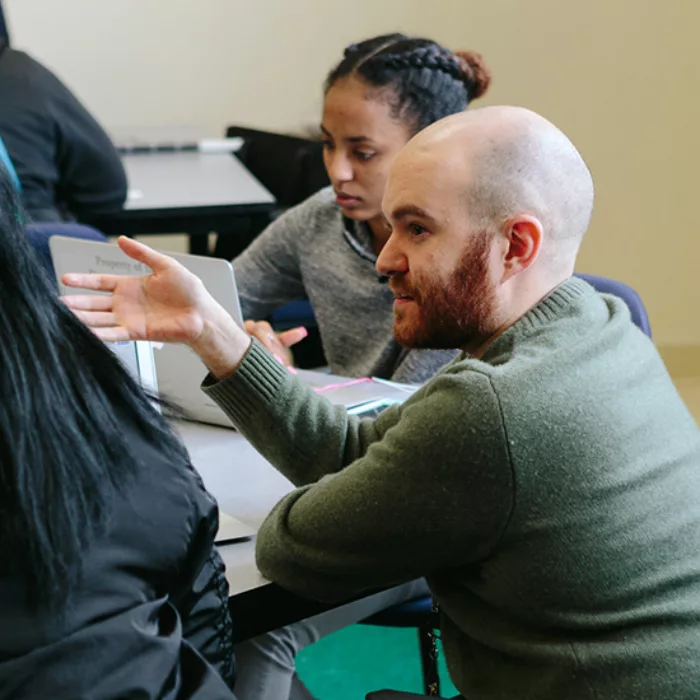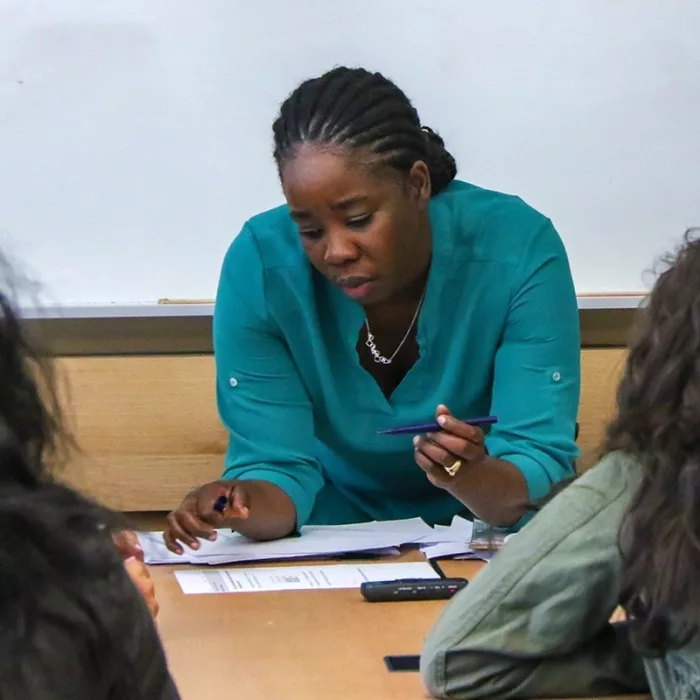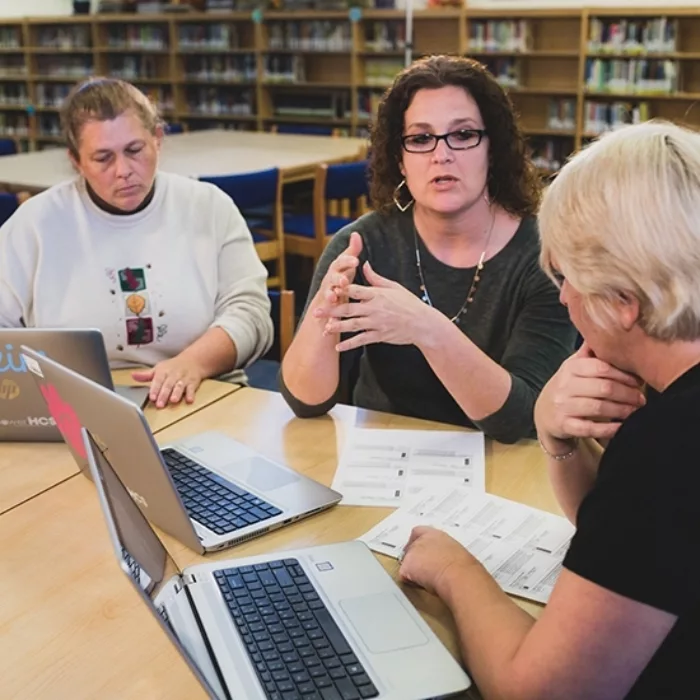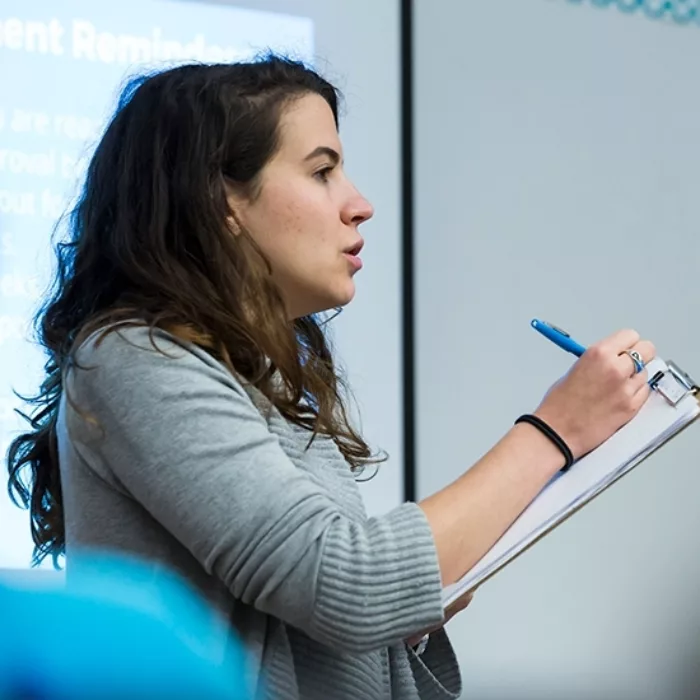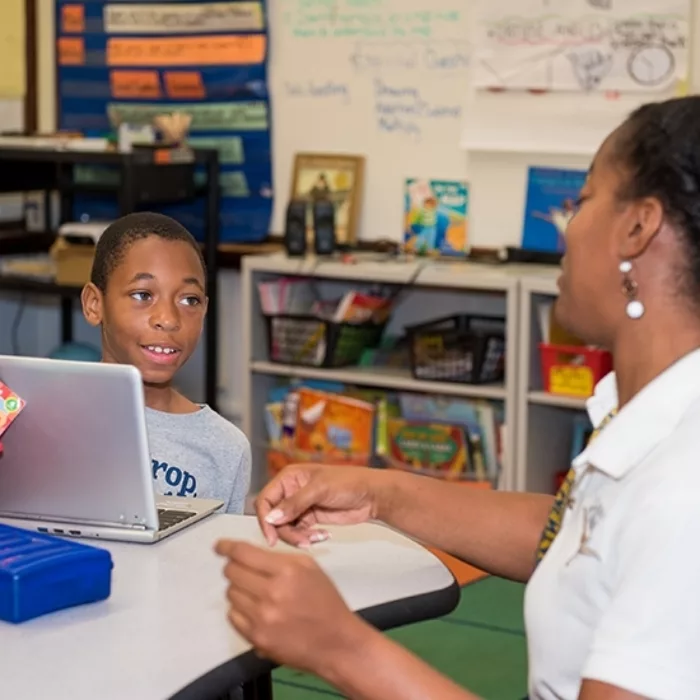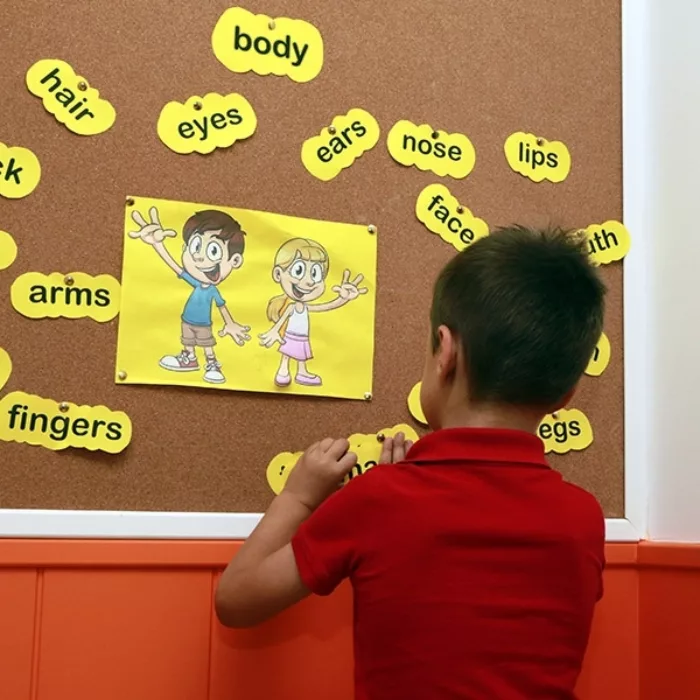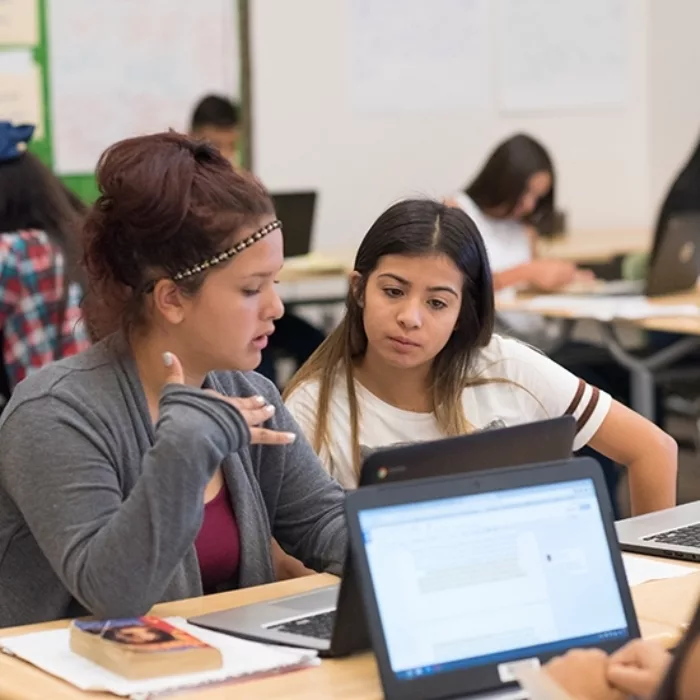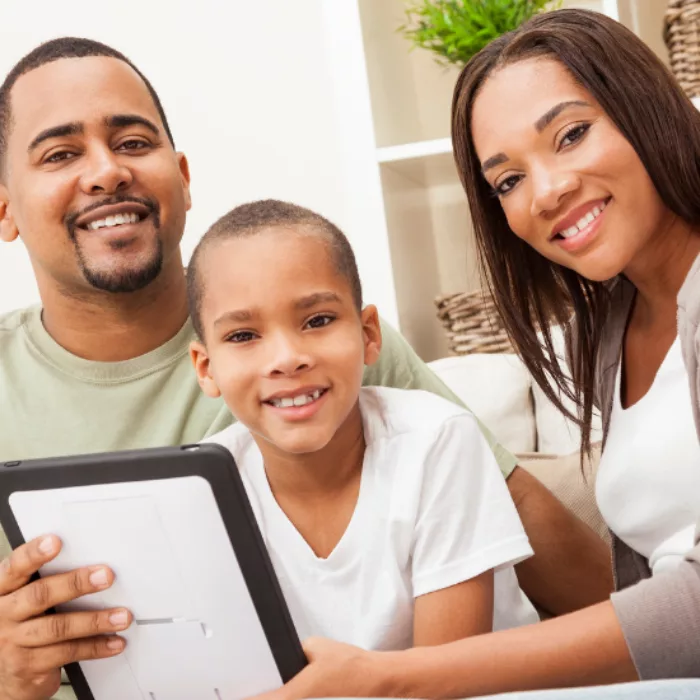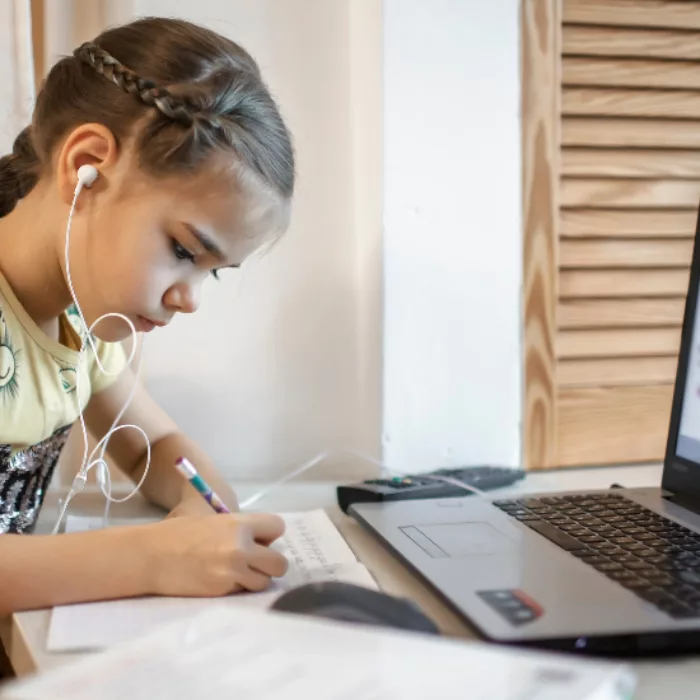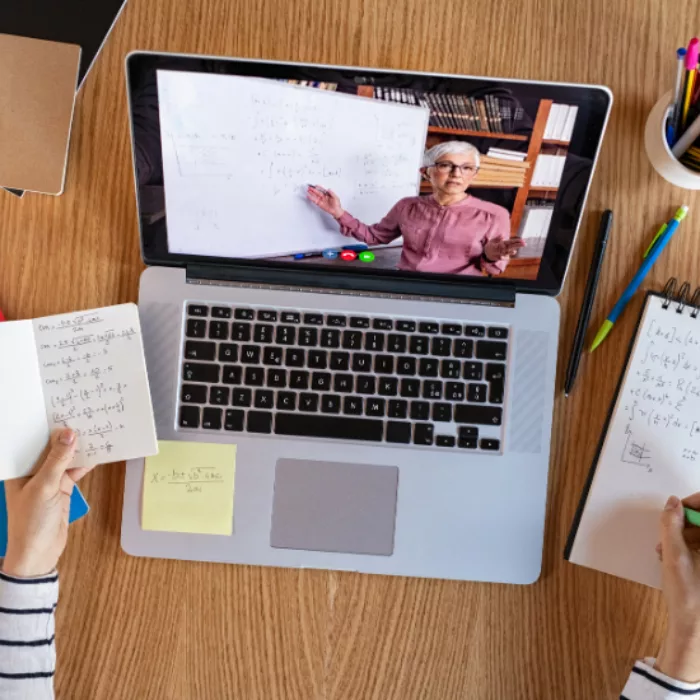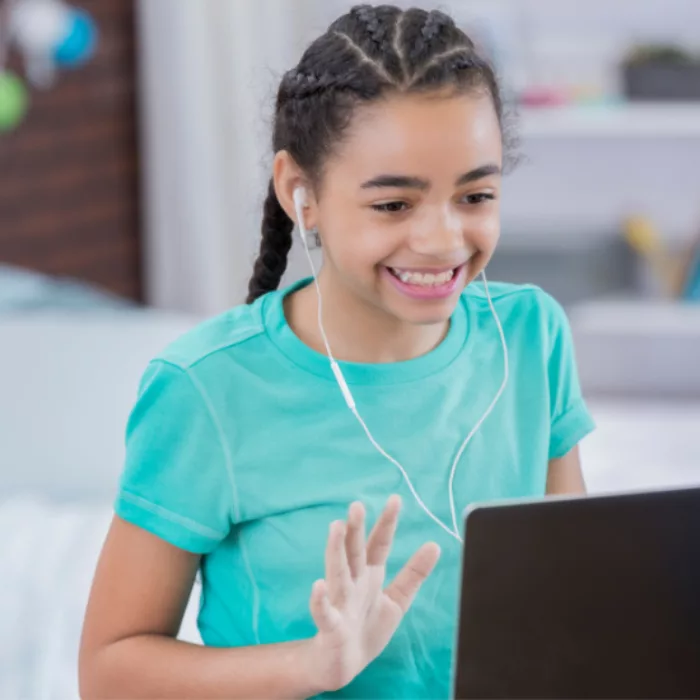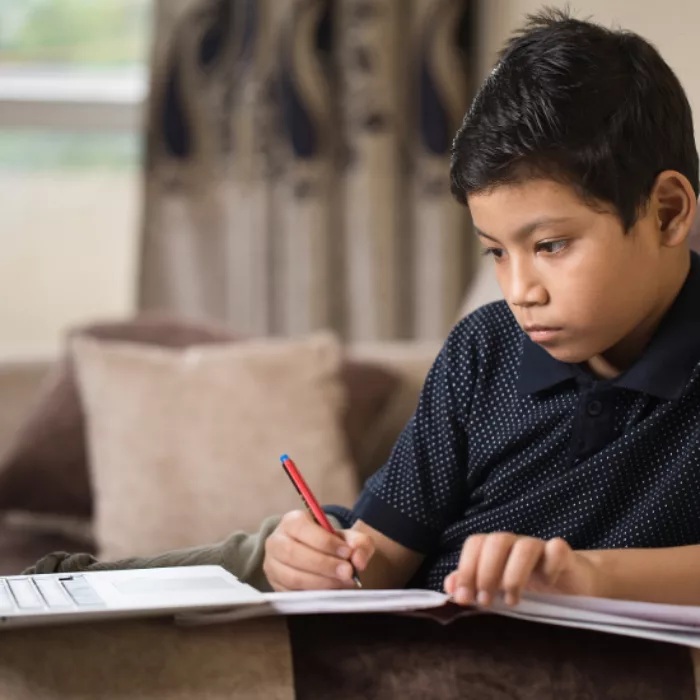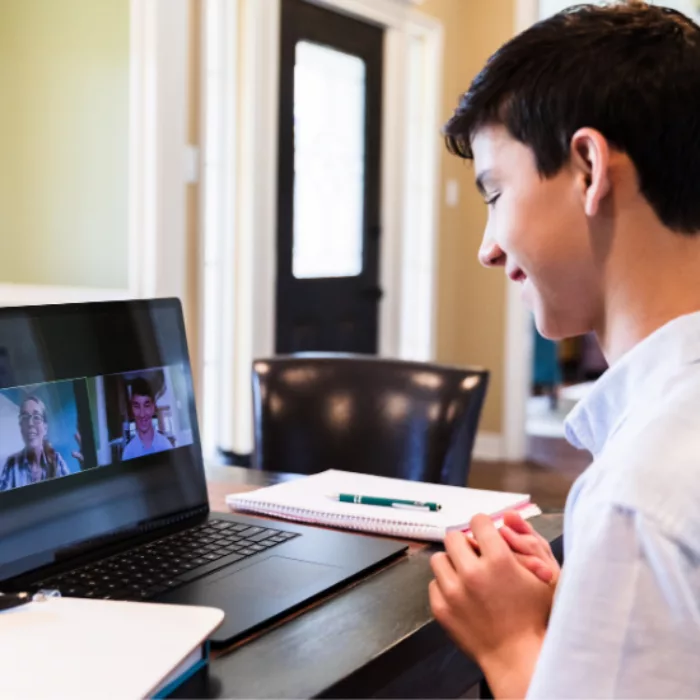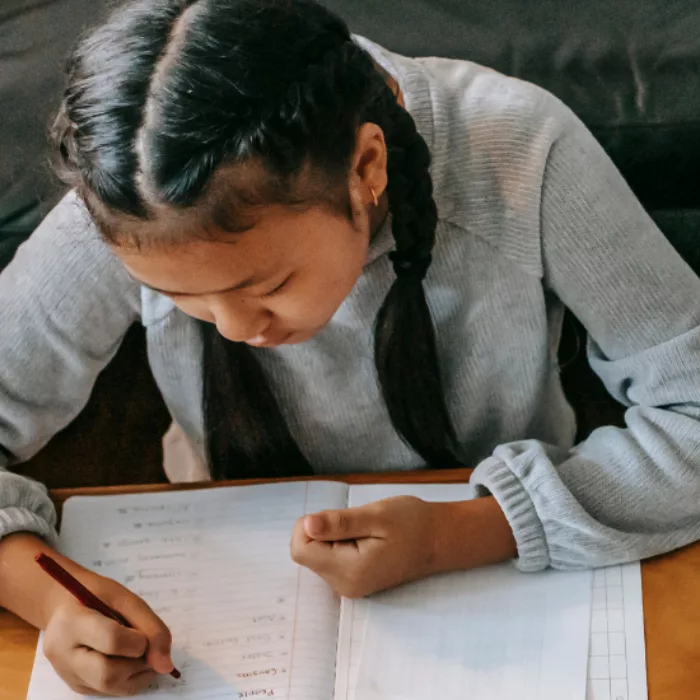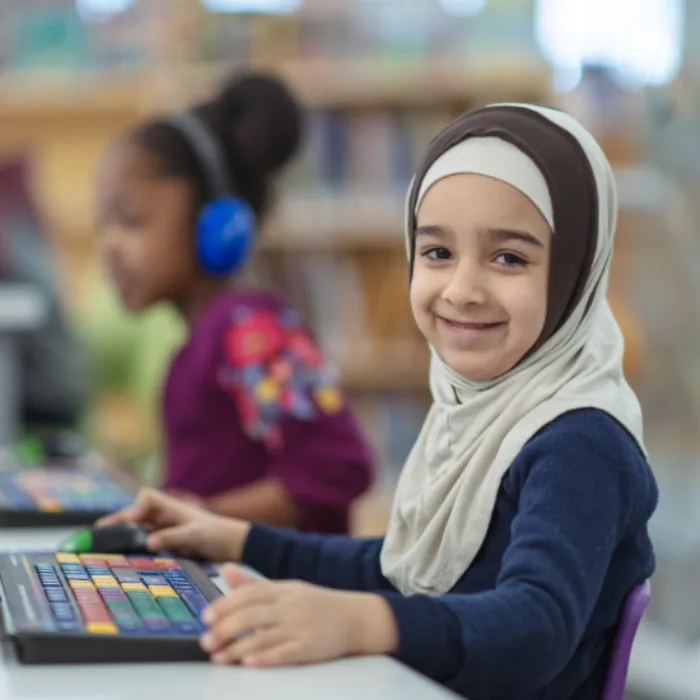Problems of Practice
Looking for answers to specific problems? Explore concrete ways to address the challenges below. Each collection details a problem of practice, why it is important, what the research says, and offers actionable solutions, resources, and real-world examples of how others have succeeded.
▲Station Rotation
How do I set up a station rotation model in my classroom?
Interested in implementing stations and not sure where to start? This guide will give you tangible resources and research, with key insights and strategies around culture, space, and routines.
How do I deepen differentiation and personalization within a station rotation model?
Currently implementing stations and thinking “now what?” This guide will give you resources around how adding more flexibility of movement, timing, strategic data use, and varied groupings will allow for greater differentiation, personalization, and...
How do I develop student ownership and accountability in a station rotation model?
Implementing a station rotation model requires intentional accountability systems to develop student ownership and ensure student success. This guide will go through strategies for developing student ownership through choice, habits, and student...
▲Supporting Students with Learning Disabilities
How do I strategically instruct students with learning disabilities in a personalized learning classroom?
How do you ensure that your instruction is supporting your students with learning disabilities effectively? Have you looked at ways to crosswalk students' IEPs with your current Learner Plans, engaged educators to collaborate around strategic...
How do I ensure rigor and high expectations for the whole student in blended/personalized learning classrooms?
Ensuring rigor and high expectations for students with learning disabilities means more than just making sure they are able to achieve the same content goals, but also supporting them to reach social and emotional goals. This guide explores ways to...
How can strategic staffing better serve students with learning disabilities?
This guide will give you concrete resources, research, and insights on three different ways to revisit your current staffing models to better serve students with learning disabilities, including reinventing the special education teacher role,...
▲Leadership Design Choices
Centralized vs. Decentralized Implementation: How do we decide what the district should hold tight vs. loose?
This guide unpacks the relative benefits of centralized or decentralized implementation of new instructional models and offers examples of the way systems across the county have managed this tension.
“Fast and Furious” vs. “Slow and Steady”: How fast should we be moving from pilot to scale? What will help us best achieve sustainability?
This guide unpacks the relative benefits of accelerating versus slowing down the pace of implementation to achieve sustainability and offers examples of the way systems across the country have managed this tension.
Prioritize Need vs. Prioritize Readiness: How do we decide where to pilot and how to allocate resources to schools?
This guide unpacks the relative benefits of allocating resources based on the need versus the readiness of schools and offers examples of the way systems across the county have managed this tension.
Build Internally vs. Buy Externally: How should we develop our talent and resource pipeline?
This guide unpacks the relative benefit of buying external resources and services versus building internal capacity and offers examples of the way systems across the county have managed this tension.
Fixed Strategy vs. Adapt with Experience: How flexible should our district strategy be over time?
This guide unpacks the relative benefits of creating fixed versus adaptive scaling strategies and offers examples of the way systems across the county have managed this tension.
“Prix Fixe” vs. “A la Carte”: Should we scale a comprehensive model throughout our system or provide access to a series of independent, modular resources or tools?
This guide unpacks the relative benefits of creating a central “prix fixe” implementation model vs offering more flexible “a la carte” options and offers examples of the way systems across the county have managed this tension.
Share Best Practices vs. Share Process/Failures: How might practitioners best learn from one another? What should we be cataloguing and sharing throughout the district?
This guide unpacks the relative benefits of sharing “best practices” versus sharing our processes and failures, and offers examples of the way systems across the county have managed this tension.
▲Research Primer
What are critical decision points when measuring to inform and improve teaching and learning practices?
Teachers and education leaders must make a series of critical decisions when beginning measurement to inform and improve teaching and learning practices. This guide provides an overview of three of these decisions and offers guidance on how to make...
What are key considerations when launching a researcher-practitioner partnership?
External partners can add critical capacity and expertise to help schools tackle measurement goals. However, successful research-practitioner relationships require intentional approaches. We offer three key considerations for launching a successful...
▲Open Educational Resources
What are Open Educational Resources and how can I start using them?
Educators seeking to understand and use Open Educational Resources (OER) can use this guide to help them search for high-quality, rigorous, and standards-aligned OER.
How can I utilize Open Educational Resources to personalize lessons and assessments?
This guide will help educators and school leaders working with Open Educational Resources (OER) to personalize lessons and meet student needs.
How can professional development support creating and implementing Open Educational Resources?
This guide provides an overview of implementing effective personalized professional development that supports curating and creating high-quality, rigorous OER curriculum, alongside concrete resources around competencies for educators.
▲Teacher Onboarding
Knowing the “Why": How do leaders communicate with new teachers around the purpose and vision of their innovative models?
Clearly communicating the “why” behind a school’s innovative model – not just the model itself – is an essential strategy for building new teachers’ abilities to understand and implement. This guide will explore various ways schools and districts...
Knowing the School: How do leaders prepare new teachers to be successful within their school models?
When welcoming new teachers (whether new to the school or to teaching), it is important that you clearly communicate the nuts and bolts that make your innovative school possible. This includes specifics about your model and approach, the supports...
Knowing the Community: How do leaders ensure new teachers understand and engage with the communities they serve?
When designing onboarding for new teachers (new to the school or to teaching in that school), it’s important to ensure they not only understand the school from an instructional standpoint but also get to know and understand the community they will...
▲Data-Driven Instruction
Differentiation: How do I use data to adjust instruction for groups and individual students?
Educators need to translate data insights into instructional actions to harness the potential of student data. This guide will explore various data-informed instructional strategies and actions at the whole-group, small-group, and individual levels.
Student Ownership: How do I support students in building agency and owning their data?
In order to support student agency and ownership of learning, educators need to develop practices that enable students to understand and use their own data in meaningful ways. This guide will explore various structures and strategies to accomplish...
Team Collaboration: How do leaders build in time and team structures for data-driven instruction?
Personalization in classrooms requires broad, intentional use of data across schools and systems. This guide explores how leaders can foster effective data-driven instruction by setting aside time, creating structures, and offering supports needed...
▲Supporting Students Who Are Learning English
Strategic Supports: How can general education teachers implement strategic supports for students who are learning English within their personalized classroom?
Are you looking for ways to better support your students who are learning English (EL) within your personalized classroom? If so, this guide will map out specific strategies that can engage your learners in new ways through nonverbal communication,...
Leveraging Language: How can students who are learning English use their home language in a personalized classroom?
Are you interested in learning how to better support your students who are learning English (“ELs”) by offering opportunities to use their home language in your general education classroom? If so, this guide will map out specific ways to engage your...
▲Strategies for Virtual, Remote, and Hybrid Learning
Virtual Learning: How can I engage families remotely to connect, collaborate, and support them as partners for students?
Strong relationships and communication with families (including parents, guardians, and other adults at home) is a vital and often under-utilized force for students' ongoing success, especially when learning occurs in a virtual setting. Explore this...
Virtual Learning: What types of supports enable successful student-driven learning?
Learning virtually can create opportunities for students to work flexibly, self-direct, and access the personalized resources they need. However, learning independently online can also pose a host of new challenges. Educators can proactively address...
How do I ensure students are engaged with each other and the content in a hybrid and/or remote learning environment?
Struggling with student engagement in your hybrid or remote classroom? This guide shares specific strategies that build student buy-in and participation in online or hybrid learning sessions.
Simultaneous Learning: How can I effectively work with in-person and remote students at the same time?
Grappling with creating effective learning experiences for students in your in-person classroom and students learning remotely at the same time? This guide shares specific strategies that help ensure student engagement, ownership, and connection.
Remote-Friendly Assessments: How can I build assessments that are accessible for students in remote and hybrid learning environments?
Looking for ways to assess a student’s mastery of new learning, no matter their physical location? This guide shares specific strategies to ensure students are engaging with and mastering content, whether they are working remotely or inside the...
How can I help students build a strong foundation for self-direction in remote learning?
Beginning to implement remote learning and not sure where to start? Start first by preparing students to engage and learn successfully at home. This guide explores three key elements needed for success: helping students become self-directed...
What are the design factors that drive quality in K-12 remote learning?
Strong remote instruction leverages key research-informed design features to effectively engage students in learning. This guide will explore three design areas – technology, pedagogy, and relationships – that teachers should consider, as well as...
How can I integrate specific blended learning practices to meet individual needs during remote instruction?
Looking for ways to implement powerful instructional practices within remote instruction? This guide explores specific strategies that leverage varied modalities to effectively collect and use data, offer personalization points, and enable progress...
▲Unfinished Learning: Measuring and Supporting Student Progress
Unfinished Learning: How do you begin to measure student progress during disruption?
Measuring unfinished learning requires a strategic measurement process that starts with reviewing data, creating strong research questions, and collecting data. This process will help make connections between learning mastery and enabling structures...
Unfinished Learning: What is the process for effectively organizing, analyzing, and making sense of data?
Analyzing and making sense of your data will allow you to find and interpret patterns, creating opportunities to develop meaningful and sustainable plans to address unfinished learning.
Unfinished Learning: What classroom practices can be implemented to address unfinished learning?
At the classroom level, to address unfinished learning, educators need to implement strategies that accelerate individual learners’ growth and progress, adapt to their differences, and build on their academic, social, and physical strengths. This...
Unfinished Learning: What system conditions are needed to address unfinished learning?
Although long-term, systemic inequities ultimately need to be addressed, unfinished learning presents an immediate challenge. In the short term, schools and districts can organize their current systems around learner-centered principles and...
▲Digital Divides
Digital Access: How can leaders ensure that every student can access the digital tools they need to develop as expert learners?
This problem of practice offers school leaders three approaches to ensure each student has the ability to use digital tools effectively, safely, and responsibly with consistent access across both home and school settings.
